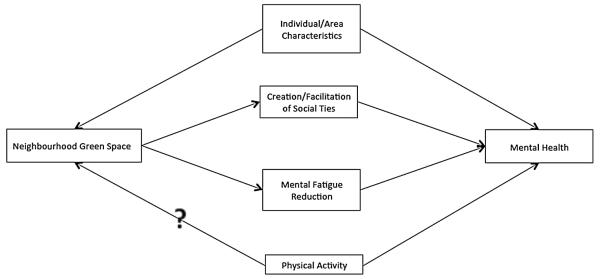Figure 1.

Directed acyclical graph showing the proposed association between variables in the model. Neighbourhood green space can affect mental health through creation of social ties and reduction of mental fatigue. Traditional individual and area characteristics (eg, income, neighbourhood deprivation) act as confounders. Physical activity is also conceptualised as a confounder, with desire for physical activity driving self-selection into greener areas. However, previous work has also conceptualised physical activity as a mediator, suggesting that greener areas impact mental health by encouraging more physical activity.
